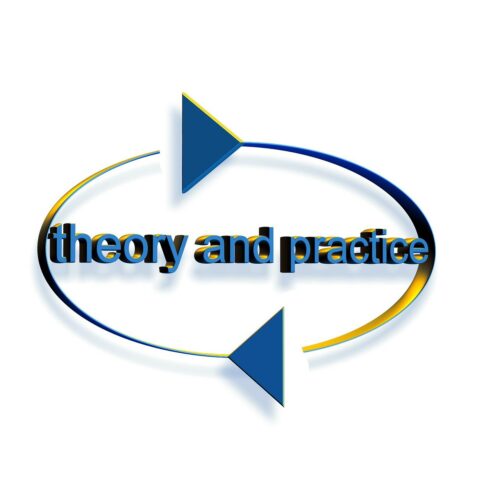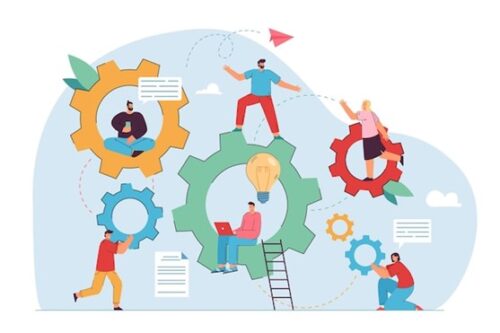WHS and Training Compliance Solutions thrilled to share the incredible impact that HBDI assessments have had on change management in Hobart’s workplaces. These assessments, which focus on understanding individuals’ thinking preferences in Hobart workplaces, have revolutionized how organizations navigate and implement change. By identifying employees’ preferred thinking styles, the HBDI assessment provides invaluable insights into how people process information, make decisions, and approach problem-solving. This knowledge allows companies to tailor their change management strategies to maximize employee engagement and effectiveness. In Hobart, the HBDI assessment has become a game-changer, empowering businesses to successfully navigate the ever-evolving landscape of change.
Change management is a critical aspect of any organization’s success in today’s dynamic business environment. To effectively manage change, it is essential to understand the thinking preferences of individuals within the organization. This is where HBDI assessments come into play. HBDI, which stands for Herrmann Brain Dominance Instrument, is a tool that helps individuals and teams understand their thinking styles and preferences. By leveraging the insights gained from HBDI assessments, organizations in Hobart can navigate change more effectively and drive successful outcomes.
Understanding thinking preferences and the HBDI model
The HBDI model is based on the concept that individuals have different thinking preferences, and these preferences can be categorized into four quadrants: analytical, practical, relational, and experimental. The assessment measures the degree of dominance in each quadrant, providing individuals with a comprehensive understanding of their thinking style. In Hobart’s workplaces, understanding thinking preferences has become increasingly important as organizations strive to build diverse and inclusive teams. By recognizing and valuing different thinking styles, organizations can harness the power of cognitive diversity, leading to better problem-solving, innovation, and decision-making.
The benefits of using HBDI assessments in change management
Implementing change initiatives can be a daunting task for organizations. However, HBDI assessments offer several benefits that can significantly improve change management outcomes. Firstly, by understanding the thinking preferences of individuals involved in the change process, organizations can tailor their communication strategies to effectively engage and influence stakeholders. For example, individuals with a dominant analytical thinking style may respond better to data-driven arguments, while those with a relational thinking style may appreciate a more collaborative approach.
Secondly, HBDI assessments enable organizations to identify potential resistance to change early on. By recognizing individuals who may have a strong preference for the status quo, organizations can proactively address their concerns and develop targeted strategies to overcome resistance. This helps create a more supportive and inclusive environment for change, increasing the likelihood of successful implementation.
Lastly, HBDI assessments promote self-awareness and personal development. When individuals understand their own thinking preferences in Hobart workplaces, they can leverage their strengths, work on their weaknesses, and actively contribute to the change management process. This not only enhances individual performance but also fosters a culture of continuous improvement within the organization.
How to conduct HBDI assessments in your organization
Now that we understand the importance and benefits of HBDI assessments, let’s explore how organizations in Hobart can conduct these assessments effectively.
- Engage a certified HBDI practitioner: It is crucial to work with a certified practitioner who has expertise in administering and interpreting HBDI assessments. They can guide you through the process, ensure accurate results, and provide valuable insights for change management.
- Set clear objectives: Before conducting HBDI assessments, define your organization’s specific objectives. Are you looking to improve team dynamics, enhance problem-solving capabilities, or drive innovation? Clear objectives will help tailor the assessment process and subsequent change strategies.
- Communicate the purpose: It is essential to communicate the purpose and benefits of HBDI assessments to all participants. This will create a supportive and open environment, encouraging individuals to engage fully and provide honest responses.
- Administer the HBDI assessment: The assessment typically consists of a questionnaire that participants complete online or in a printed format. Ensure that participants have sufficient time to complete the assessment and emphasize the importance of providing accurate responses.
- Analyze and interpret the results: Once the assessments are completed, work with the certified practitioner to analyze and interpret the results. This will provide valuable insights into individual and team thinking preferences, which can inform change strategies and interventions.
- Share and discuss the results: Organize feedback sessions to share the HBDI assessment results with participants. Encourage open discussions about individual thinking preferences and their implications for change management. This will foster self-awareness and create a shared understanding of the organization’s collective thinking style.
Implementing change strategies based on HBDI assessment results
HBDI assessments serve as a foundation for developing and implementing change strategies that resonate with individuals’ thinking preferences. Here are some key considerations for leveraging HBDI assessment results in change management:
- Tailor communication: Use the insights gained from HBDI assessments to adapt your communication strategies. Craft messages that align with each individual’s thinking style, ensuring they are more receptive and engaged in the change process.
- Address resistance: Identify individuals who may have a strong preference for the status quo and develop targeted strategies to address their concerns. Leverage their analytical thinking style to provide data-driven evidence supporting the need for change, or engage their relational thinking style to foster collaboration and involvement.
- Promote cognitive diversity: Recognize and value the diverse thinking preferences within your organization. Encourage individuals to leverage their unique strengths and perspectives during the change process. This will enhance problem-solving and decision-making by harnessing the power of cognitive diversity.
- Provide tailored training and development: Use HBDI assessment results to identify areas for personal and professional development. Offer training programs and resources that cater to individuals’ thinking preferences, helping them grow and contribute to the change management journey.
By implementing change strategies based on HBDI assessment results, organizations in Hobart can drive successful change management initiatives while fostering a culture of inclusivity and growth.
Overcoming challenges in utilizing HBDI assessments for change management
While HBDI assessments offer valuable insights, organizations may encounter certain challenges when utilizing them for change management. It is important to be aware of these challenges and proactively address them to ensure successful implementation.
- Resistance to assessment: Some individuals may be skeptical or resistant to participating in HBDI assessments. To overcome this, communicate the purpose and benefits of the assessments clearly. Emphasize that the assessments aim to enhance self-awareness, improve collaboration, and drive successful change outcomes.
- Interpreting and applying results: Interpreting HBDI assessment results requires expertise and experience. It is crucial to work with a certified practitioner who can accurately analyze the data and provide meaningful insights. Additionally, organizations must ensure that the results are effectively applied in change management strategies.
- Sustaining the change: HBDI assessments provide a snapshot of individuals’ thinking preferences at a given point in time. However, people’s preferences may evolve over time, and sustaining the change requires ongoing monitoring and adaptation. Regular reassessments and check-ins can help ensure that change strategies remain relevant and effective.
By proactively addressing these challenges, organizations in Hobart can overcome barriers to utilizing HBDI assessments effectively and maximize the impact of change management initiatives.
Training and resources for HBDI assessments in Hobart
To support organizations in Hobart in implementing HBDI assessments for change management, a range of training and resources are available. These include:
- Certified HBDI practitioners: Engaging certified HBDI practitioners ensures that organizations receive expert guidance throughout the assessment process. These practitioners have undergone extensive training and are equipped to administer and interpret HBDI assessments effectively.
- Workshops and seminars: Several organizations in Hobart offer workshops and seminars focused on HBDI assessments and their application in change management. These sessions provide participants with practical knowledge and tools to leverage HBDI assessments for driving successful change outcomes.
- Online resources: Numerous online resources, such as articles, case studies, and video tutorials, are available to deepen understanding of HBDI assessments and their relevance to change management. These resources can be accessed at any time, providing organizations with valuable insights and guidance.
By leveraging these training and resources, organizations in Hobart can build their capacity to utilize HBDI assessments effectively and drive successful change management initiatives.
Success stories of organizations in Hobart that have used HBDI assessments for change management
Several organizations in Hobart have successfully utilized HBDI assessments to drive change management initiatives. Let’s explore some success stories:
Success Story 1: Manufacturing Company DEF
Manufacturing Company DEF embarked on a process improvement journey to enhance operational efficiency. By conducting HBDI assessments, they gained insights into the thinking preferences of their employees. Armed with this knowledge, the organization redesigned work processes to align with individuals’ thinking styles. This resulted in increased employee engagement, improved productivity, and reduced waste in their operations.
Success Story 2: Government Agency GHI
Government Agency GHI aimed to enhance customer service by implementing a customer-centric culture. HBDI assessments were conducted to understand employees’ thinking preferences and identify areas for improvement. The agency used the assessment results to develop tailored training programs and workshops focused on enhancing employees’ relational thinking skills. As a result, customer satisfaction scores increased, and the agency became more responsive to customer needs.
These success stories demonstrate the transformative impact of HBDI assessments on change management in Hobart’s workplaces. By leveraging the insights gained from these assessments, organizations can drive positive change and achieve their desired outcomes.
Conclusion: Harnessing the power of HBDI assessments in driving successful change management in Hobart’s workplaces
The HBDI assessment is a powerful tool that can have a significant impact on change management in Hobart’s workplaces. By understanding individual thinking preferences in Hobart workplaces, organizations can tailor their change management strategies to effectively engage and motivate employees. The HBDI assessment measures four thinking preferences – analytical, practical, relational, and experimental – and provides valuable insights into how individuals process information and make decisions. Armed with this knowledge, leaders can design change initiatives that resonate with employees’ preferred thinking styles, increasing the likelihood of successful implementation. In Hobart’s workplaces, the HBDI assessment can help organizations navigate the challenges associated with change management. By identifying employees’ thinking preferences in Hobart workplaces, organizations can proactively address potential resistance or reluctance to change. For example, individuals with a strong preference for analytical thinking may require more data and evidence to fully support a proposed change, while those with a practical thinking preference may prioritize efficiency and practicality in the implementation process. Understanding these preferences allows leaders to communicate the benefits of change in a way that aligns with employees’ natural thinking styles, promoting buy-in and engagement. Moreover, the use of HBDI assessments in change management can foster a culture of collaboration and inclusivity in Hobart’s workplaces. By recognizing and valuing the different thinking preferences within an organization, leaders can encourage diverse perspectives and ideas during the change process. This not only enhances problem-solving capabilities but also promotes employee satisfaction and engagement. When employees feel that their unique ways of thinking are respected and utilized, they are more likely to embrace change initiatives and actively contribute to their success. In conclusion, the HBDI assessment can be a valuable tool for effective change management in Hobart’s workplaces. By understanding employees’ thinking preferences and tailoring change strategies accordingly, organizations can increase the likelihood of successful implementation and foster a culture of collaboration and inclusivity. Embracing the insights provided by HBDI assessments can lead to positive outcomes for both individuals and organizations in navigating the complexities of change.
Change management is crucial for organizations in Hobart to thrive in today’s ever-evolving business landscape. HBDI assessments offer a powerful tool to understand individuals’ thinking preferences and leverage their strengths during the change process. By tailoring strategies, addressing resistance, and promoting cognitive diversity, organizations can drive successful change management initiatives.
However, utilizing HBDI assessments effectively requires careful planning, interpretation of results, and ongoing adaptation. By engaging certified practitioners, leveraging training and resources, and learning from success stories, organizations in Hobart can harness the full potential of HBDI assessments and drive successful change management in their workplaces.
So, if you’re ready to take your change management efforts to the next level, consider incorporating HBDI assessments into your organization’s toolbox. Embrace the power of thinking preferences in Hobart workplaces and unlock the potential for transformative change.
To learn more about HBDI assessments and their application in change management, contact our certified practitioners today. Let us guide you on your journey to driving successful change in your organization.












